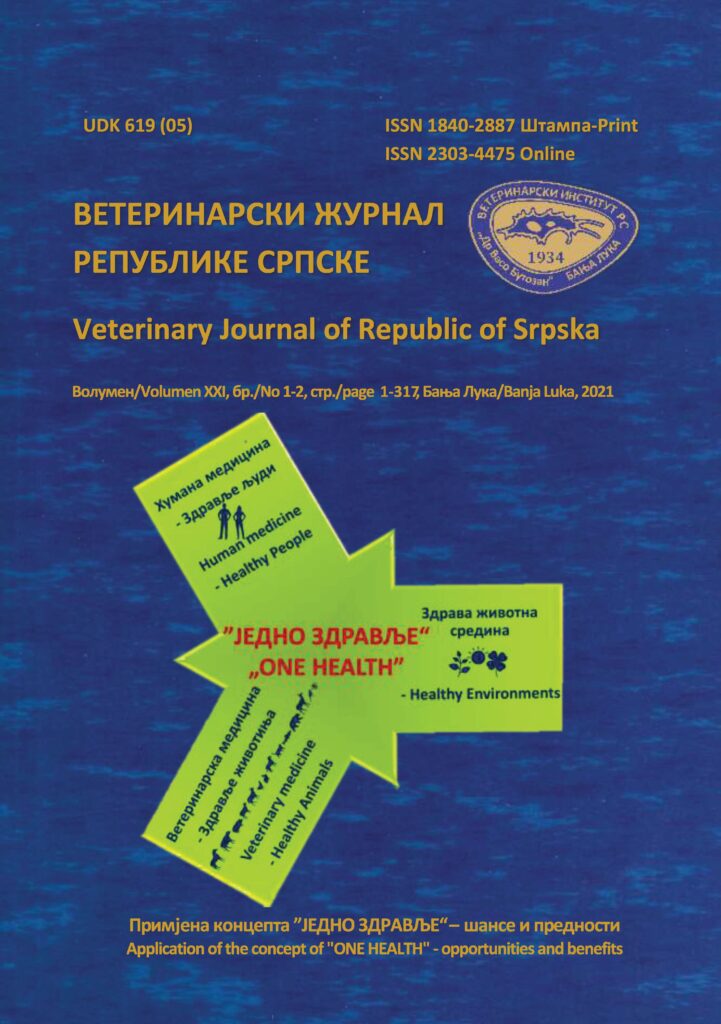POSSIBILITIES AND LIMITATIONS OF THE USE OF ESSENTIAL OILS IN DOGS AND CATS
DOI:
https://doi.org/10.7251/VETJEN2101238SAbstract
Essential oils have numerous medicinal properties which include antiseptic, antiinflammatory, anticancer but also antiviral, antimicrobial and antiparasitic effects. Although researches have highlighted different possible application of these oils, little is known about their use in animals including dogs and cats. Specifically, essential oils showed effects against various bacterial (Staphylococcus spp., Pseudomonas aeruginosa, Enterococcus spp.), fungal (Malassezia pachydermatis, Microsporum canis, Trichophyton mentagrophytes), endoparasitic (Giardia duodenalis, Echinococcus granulosus, Toxocara canis) and ectoparasitic (Otodectes cynotis, Demodex canis, Ctenocephalides felis, some ticks etc) pathogens in dogs and cats. In addition, essential oils exhibit numerous positive properties such as complex chemical composition (high efficacy, less susceptibility to resistance), their natural origin etc. Therefore, certain essential oils based formulations are already in use, such as different shampoos. However, the main limitation for the use of these plant products is the insufficiently tested safety of use. Thus, some essential oils are considered toxic to pets, especially when used on cats. The main reason for this is most likely the deficiency of some liver enzymes that are involved in metabolic processes (as UDP-glucuronosyltransferase in cats), which leads to the accumulation of some active ingredients in the organism and their toxicity. Therefore, caution and rational application are needed in terms of adequate selection of plant species, dosage, concentration and the methods of use. In addition, since essential oils are prone to evaporation and instability, the encapsulation technique can further increase their in vivo efficacy as well as enable controlled release. That can reduce the required dose and additionally increase safety of their application.

